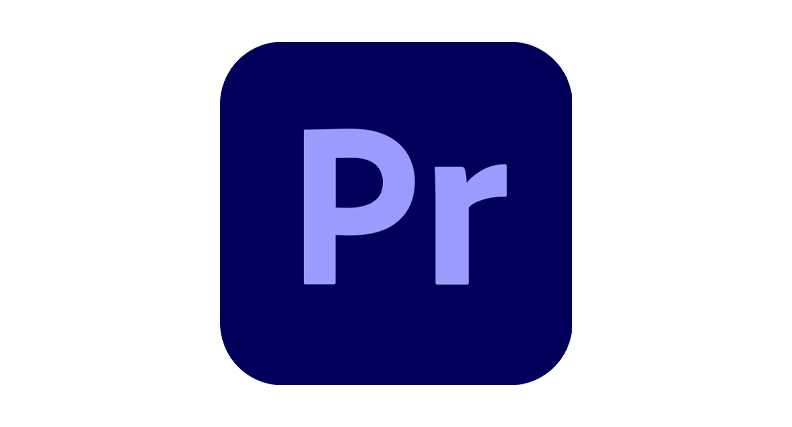Video content is available on so many platforms online today that creating content to fit them all can be daunting. Filming and editing videos is already quite a time-consuming task, and then you also have to adjust the videos for each platform, upload them, and render them multiple times!
If you want your content to have the highest quality for every platform you upload, you must render the final video with the specific export settings for each platform. That can make a difference in making your video content shine on every platform.

The three most popular and important online platforms for video content are YouTube, TikTok, and Instagram. From the video aspect ratio to its resolution and duration, you'll have to adapt your videos to each platform.
The export process is easy to manage, but knowing the right export settings will ensure your video looks high-quality and is easy to watch. That's why it's so easy to work with video editing software like Adobe Premiere Pro, which allows you to export the same video with different settings, use presets, and create new ones for each platform.
In this ultimate guide to the best export settings for Premiere Pro, you'll learn how to export your video using Adobe Premiere Pro, which can speed up your export process, and how to customize the settings and create presets for each platform.
Open your Premiere Pro project, and let's dive in!
What Are the Best Export Settings for Premiere Pro?

Overall, there are some ground rules that every video content creator must follow to ensure your videos are rendered in the best quality possible. Remember that every project may require different export settings, meaning that not every video has to be in 4K with a 3840 x 2160 aspect ratio and 60 FPS.
Before diving into the specific export settings for each platform, let’s examine the options and elements involved in the export settings dialog box to understand why you're choosing those settings for each platform. These are the most important ones that you need to pay attention to for each platform.
-
Export Format
The format refers to the file format in which you will render and export your video. The common options are .mp4 and .mov. Premiere Pro offers almost every major format available, depending on your projects, although the most common are .mp4 and H.264 encoding.
-
Frame Rate
It's the speed at which images are displayed on screen. It's expressed in frames per second (FPS). The standard for online video is 24, 25, 30, and 60 FPS.
-
Frame Size
It's the width per height in pixels of a video frame. The standard is 1280 x 720 for HD video and 1920 x 1080 for Full HD. Higher resolutions, such as Quad HD (2560 x 1440) and UHD (3840 x 2160), can be found on platforms like YouTube and Vimeo.
-
Quick Reference Guide
Here's a quick reference guide with the best settings for standard HD, Full HD, and UHD videos. For TikTok, Instagram Reels, and YouTube Shorts, you need to use the 9:16 resolution for vertical videos instead of 16:9.
Video Export Settings
Format: H.264.
-
Frame size: 1280 x 720 (HD videos), 1920 x 1080 (Full HD), and 3840 x 2160 (4K UHD).
-
Frame rate: match source video frame rate.
-
Aspect ratio: 16:9 (portrait), 9:16 (vertical).
-
Bitrate encoding: VBR, 1-pass.
-
Target bitrate: 20 to 30 Mbps for HD video and 60 to 80 Mbps for 4K.
-
Audio Export Settings
Audio format: AAC
Audio codec: AAC
-
Sample rate: 48 kHz (48000 Hz)
-
Channel: Stereo
-
Audio quality: High
-
Bitrate settings: 320 kbps
How to Export a Video from Premiere Pro
Once you edit the video, the last step is to export it from Premiere Pro. If this is your first time exporting videos in Adobe Premiere Pro, here's a quick guide on the steps to follow. I won't focus on any specific settings here, as I'll go through them for each platform in the following sections.
-
Step 1: Set Up the Sequence for Rendering
I recommend you save your project and sequence in case something goes wrong. Then, set an in and out point to your sequence by moving the playhead to the starting point and pressing I. Then repeat the same on the end position and press O.
If you export the entire sequence, you don't need to set the in and out points; just select the sequence to render.
-
Step 2: Open the Export Window
To begin the export process, navigate to File and click Export from the drop-down menu or press CTRL + M (in Windows) or CMD + M (on Mac) to launch the File Export Media Window.
-
Step 3: Choose Export Format
Select the format that you will export. You'll want to use H.264, the standard and most used format for most of your videos. You will also find the export preset drop-down menu, where you can choose some preset Premiere Pro offers or those you create. If you're uploading a video for YouTube, select YouTube and then click export.
Next, you must set your export's video and audio settings, which we'll discuss in detail in the next section. Choose Render at Maximum Depth for the highest quality.
-
Step 4: Choose Export Folder
Finally, click the export button to choose the render's destination folder, begin rendering, and finish the project.
Best Premiere Pro Export Settings for YouTube

YouTube is the platform where most vloggers and content creators upload their videos. It’s so popular that Premiere Pro already has a YouTube export preset with the best export settings for 1080p Full HD. If you select YouTube from the preset drop-down menu, the export settings will grant you a high-quality video in a simple way.
However, you can have more control over your export by manually adjusting the video and audio settings. These are the best export settings for YouTube videos:
-
Export Settings for YouTube Video
Format: H.264
-
Frame Size: will depend on the resolution you're aiming for. Choose only among the HD resolutions, and keep in mind that the file size of the video will be affected by the export resolution and quality.
-
HD resolution: choose 1280 x 720.
-
Full HD resolution: choose 1920 x 1080.
-
Quad HD resolution: choose 2560 x 1440.
-
UHD (4K) resolution: select 3840 x 2160.
-
Frame Rate: select match source video.
-
Target bitrate: set it at 8 Mbps and maximum bitrate at 50.
-
Bitrate encoding can be set to VBR, 1- Pass.
For the best audio settings, choose AAC as the audio format and audio codec, sample rate 48kHz, stereo audio channels, high Quality, and Bitrate at 320kbps. You can now continue exporting the video and uploading it to YouTube, and I recommend saving the preset for future projects.
-
Export Settings for YouTube Shorts
If you're uploading YouTube Shorts, the Full HD preset and the previous options will require a few adjustments. YouTube Shorts are vertical videos similar to TikTok and Instagram Reels, so you will need to change at least the aspect ratio.
Format choose H.264
-
The frame size must be in a vertical resolution. For the optimal setting, choose 1080 x 1920.
-
The frame rate can be set at 24, 25, or 30; however, the best choice is to match the source video.
-
The audio settings can be the same as those of YouTube videos.
-
Instead of updating the YouTube preset, you can decide to create a different preset for YouTube Shorts to speed up the export process.
Best Premiere Pro Export Settings for Instagram

Instagram, an app that began as a platform to share photos, slowly evolved to become more focused on video, not unlike TikTok. The most common forms of video uploaded to Instagram are Instagram Reels and stories, so I'll focus on them.
If you want to upload content to Instagram reels, the video should be as short as 3 seconds and up to 90 seconds recording from the app or longer if you upload it from a video file. Here are the best export settings for Premiere Pro:
-
Format: H.264 mp4.
-
Frame Size: 1080 x 1920 vertical resolution in a 9:16 aspect ratio.
-
Frame Rate: select match source video or 30FPS.
-
Render At Maximum Depth.
-
Maximum Render Quality.
-
Target bitrate: set it at 2 Mbps and a maximum of 3Mpbs.
-
Bitrate encoding can be set to VBR, 2- Pass.
-
Choose the AAC audio format and codec, sample rate 48kHz, stereo channel, and bitrate 320kbps. Click export, and remember to save the project.
Best Export Settings for TikTok in Premiere Pro

TikTok is one of the most popular video content platforms because of its short-form videos, which have influenced other platforms like Instagram and YouTube.
TikTok videos recorded from the app can be up to 60 seconds long, and upload videos up to 3 minutes.
-
Format: H.264.
-
Frame size: 1080 x 1920 in a vertical resolution and 9:16 aspect ratio.
-
Frame Rate: select match source video for a better export, but you can set it to 30 or 60 fps.
-
Render At Maximum Depth.
-
Maximum Render Quality.
-
Set the target bitrate at 15 Mbps.
-
Bitrate encoding can be set to VBR, 1- Pass.
-
You can choose the same audio settings as the others: AAC audio format and codec, sample rate 48kHz, stereo channel, and bitrate settings at 320kbps.
Final Words
Knowing the best settings for each platform and how to set them up on Adobe Premiere Pro will make your experience as a content creator easy. However, there are some cases where you need to adapt the best export settings to the specific project you are working on and your equipment, as some render settings can take more CPU processing than others.
Experimenting will also give you a deep understanding of how these settings affect the output video quality and how your equipment performs. Also, always keep an eye on new trends and codecs to keep creating videos with the best export setting in Premiere Pro.
Good luck!



